The location where I compared my phenology spot to is a secondary succession forest regrown from former agricultural land and logging. The terrain is hilly with flat ground from the land usage as plowed agricultural fields.
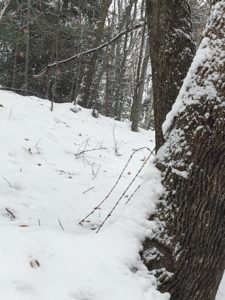
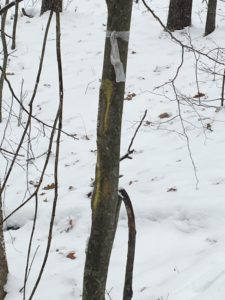
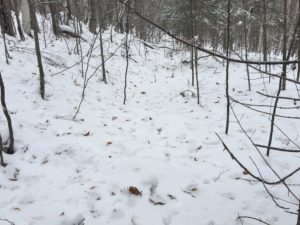
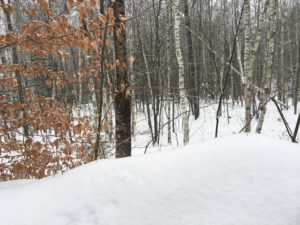
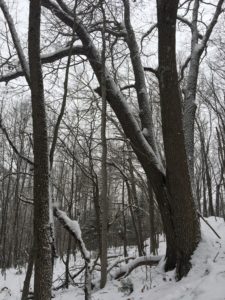
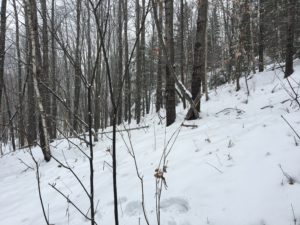
The top photos show some of the land usage features of the land including barbed wire fencing, boundary marker trees, and an old road; there is a nearby stonewall that I couldn’t locate for a picture. The bottom photos show the forest composition which is explained in detail below. The link below is for a mymaps that shows the locations of my normal spot and the spot of comparison: https://www.google.com/maps/d/u/0/edit?mid=1LHkXgX_ek8lc5t64KuJk8AWISMwhXi72&ll=44.39480683496581%2C-71.97312903240282&z=17.
In the style of Mabel Wright regarding this place:
This place with its rolling hills and flat benches each staggered at an elevation higher than the previous is one with wonder of its past as farmland. The old barbed wire and stonewall fences, the old grownup roads, the hidden boundary markers are wrinkles upon the body of this land which once oozed with a youthful vibrance from the activity of its former farming days. The land has a young forest of American beech, striped maple, paper birch, poplar, yellow birch, red oak, red spruce, balsam fir from which the reverberating sound of a pileated woodpecker drilling into a tree is often heard. This section of the forest with abundant snags is great habitat for these pileated woodpeckers; comparatively the small area of mature hardwood forest high on the shoulder of the hill is much quieter. The tracks in both locations ask for wonder what animals where here and later excitement at listening to and attempting to call in a grunting buck and in a verbal exchange of calls with an alarmed crow. If the snow was less crunchy maybe the birds and deer would be easier to sneak up upon, alas that wasn’t the case.
In the style of Aldo Leopold a place comparison:
Two drastically different places one a typical forested lowland area now with a high river that alas has taken the ability to use the riverbank sandy soil as a source of great tracking information. The other place, a normal post-agriculture forest where the forest has retaken land boldly cleared by the farmer only to let in return to its former state. This place is a vibrant forest, great for hunting with a layer of snow that makes tracking easy even for the lazy man, a hunter unmotivated to understand the forest for its signs of wildlife. The rub trees, the nibbled browse, the animal beds, the acorn tops, the woodpecker holes, these signs of wildlife this man not in touch with this forest will miss for he covers his incompetencies by burying his nose in the ground and blindly following the various tracks. But enough about others for I observe that the first place is significantly different than the second and that each place holds different animals and vegetation and that these lack of similarities between the places from their species and history makes these places have different values and importance.